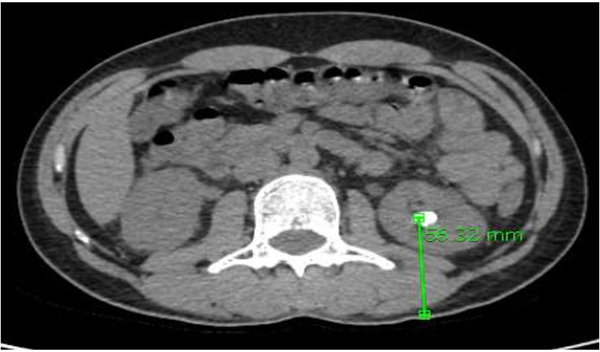-
Home
-
About JCTR
-
Gold Open Access
-
Issues
-
Editorial board
-
Author guidelines
-
Publication fees
-
Online first
-
Special issues
-
News
-
Publication ethics
-
Partners
-
Submit your manuscript
-
Submit your review report
-
Editorial Office
-

This work is licensed under a Creative Commons Attribution-NonCommercial 4.0 International License. ISSN print: 2382-6533 ISSN online: 2424-810X
Volume 7 issue 2
Role of stone heterogeneity index in determining success of shock wave lithotripsy in urinary calculi
Nadeem Iqbal*, Aisha Hasan, Ahsan Nazar, Sajid Iqbal, Mohammad Haroon Hassan, Behzad Saeed Gill, Rabiyya Khan, Saeed Akhter
Iqbal et al. J Clin Transl Res 2021; 7(2):6
Published online: March 24, 2021
Abstract
Background & aim: Various stone factors can affect the outcome of shock wave lithotripsy (SWL). A novel factor called the stone heterogeneity index (SHI) may have an impact on stone free rates. The objective of this study was to assess the role of SHI in SWL outcomes.
Methods: Patients´ medical records were reviewed for the collection of data variables. They were subjected to SWL, using an electromagnetic lithotripter machine (Storz Modulith SLX-MX). Computation of mean stone density (mean value of the Hounsfield units) and SHI was accomplished by generating elliptical regions of interest on the CT scan images. Grouping was performed on the basis of stone free and failure outcomes. Relevant statistical tests were applied for continuous and categorical variables. A p-value of ≤ 0.05 was considered statistically significant.
Results: Overall, 385 subjects were included having a mean age of 38.4 ± 14.7 years. The cohort comprised 276 (71.7%) males and 109 (28.3%) female patients. A total of 234 (60.8%) patients were rendered successful (stone free after one session) while 151 (39.2%) of the patients were declared to have failed the SWL procedure. Stone length, stone density, and SHI values were 13.7 ± 7.6 mm, 935 ± 404, and 201 ± 107, respectively. The stone density, SHI, and stone length were significantly different between the two groups (p-values of 0.001, 0.02, and 0.04, respectively).
Conclusions: SHI can be a helpful CT scan-based parameter to assess stone fragility. It can help clinicians in the judicious selection of patients before implementing SWL procedure.
Relevance for patients: Non-contrast computed tomography based stone parameters have been found to be effective for predictions of outcomes. SHI can be a helping tool to better predict shock wave lithotripsy success rates when treating the renal stones.

DOI: http://dx.doi.org/10.18053/jctres.07.202102.006
Author affilation
1. Department of Urology and Kidney Transplant, Pakistan Kidney Institute, Shifa International Hospital, Islamabad, Pakistan
2. Riphah International University, Rawalpindi, Pakistan
3. Department of Rehabilitation, Pakistan Navy PNS Hospital, Karachi, Pakistan
*Corresponding author
Nadeem Iqbal
Department of Urology and Kidney Transplant, Pakistan Kidney Institute,, Shifa International Hospital, Sector H-8/4, Islamabad, Pakistan
Tel: 0334-5346538
Email: dr_nadeemiqbal84@yahoo.com
Handling editor:
Michal Heger
Department of Pharmaceutics, Utrecht University, the Netherlands
Department of Pharmaceutics, Jiaxing University Medical College, Zhejiang, China

